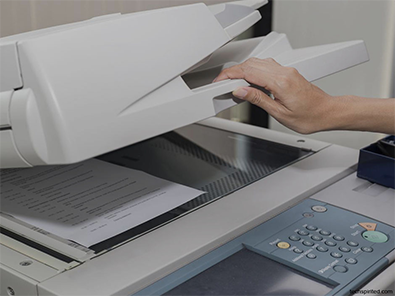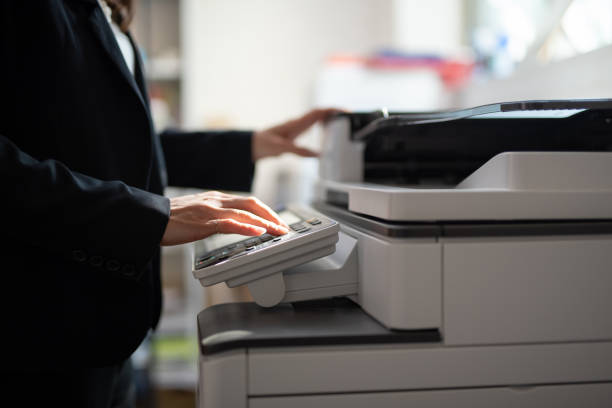Print resolution (DPI) is crucial for professional printing, determining sharpness and quality. Indianapolis businesses that rely on printed materials for branding and communication need to understand how DPI affects the final product.
A higher DPI ensures crisp images, legible text, and eye-catching visuals, while a lower DPI can compromise your professional image. This guide explains everything you need to know about DPI, why it matters, and how local businesses can make the right printing choices.
What Is Print Resolution (DPI)?
DPI measures how many ink dots a printer can place within one inch of paper. The more dots, the higher the resolution.
A high-resolution photo shows details clearly, while a low-resolution one looks pixelated. In professional printing, DPI is critical because it directly impacts how your documents and images appear.
Why Print Resolution Matters
Every business wants to stand out.This is crucial for marketing materials, reports, or branded stationery, and print resolution (DPI) is a significant factor. A flyer promoting a downtown restaurant, for example, needs sharp food images to capture attention.
A real estate brochure benefits from crisp property photos. Even simple office documents can look more professional when printed at a higher DPI. Low-quality prints can make clients question your attention to detail, while high-quality prints can strengthen your reputation.
The Difference Between 300 DPI and 600 DPI for Printing
One of the most common questions businesses ask is about the difference between 300 DPI and 600 DPI for printing.
- 300 DPI: Ideal for standard office printing, documents, and flyers. It offers clear text and decent image quality without using excessive ink.
- 600 DPI: Best for high-quality images, detailed graphics, and professional materials like catalogs or presentations. Prints are sharper and more defined.
The choice often depends on your needs. If you’re printing invoices, 300 DPI is sufficient. But if you’re producing marketing materials for trade shows, 600 DPI ensures your brand looks its best.
How Print Resolution Affects Everyday Business Printing
Different industries depend on printing in unique ways, and DPI requirements can vary.
- Law firms: Need crisp, professional text documents, often handled well at 300 DPI.
- Marketing agencies: Rely on high-resolution prints for client campaigns, usually requiring 600 DPI.
- Retail businesses: Use posters, menus, and promotional signs where higher DPI creates more appealing visuals.
- Schools and universities: Benefit from affordable, mid-range resolution for bulk document printing.
Understanding DPI allows each business to balance cost, speed, and quality effectively.
High DPI vs. Low DPI: Pros and Cons
Choosing the right DPI often means weighing pros and cons.
High DPI (600 or more)
- Pros: Sharp images, detailed graphics, professional finish.
- Cons: Slower printing speed, higher ink or toner use.
Low DPI (300 or below)
- Pros: Faster printing, lower ink or toner use, efficient for bulk text.
- Cons: Less sharp images, not ideal for marketing materials.
Businesses that print in large volumes may prefer 300 DPI for efficiency, while those prioritizing image quality lean toward 600 DPI.
Choosing the Right DPI for Your Printing Needs
So, how do you decide what’s right for your office? Ask yourself these questions:
- What are you printing most often? Text-heavy reports don’t need high resolution, but promotional material does.
- Who will see the prints? Internal documents don’t require the same polish as customer-facing brochures.
- How often do you print images? The more image-heavy your documents, the higher the DPI you’ll need.
The right DPI depends on striking a balance between cost and quality that fits your business goals.
How Print Resolution Impacts Costs
Print Resolution (DPI) also affects your expenses. Higher DPI settings use more ink or toner, which increases long-term printing costs. They can also slow down print speed, which matters if your office handles large batches daily.
On the other hand, using too low of a DPI for professional materials can cost you in lost opportunities if your brand doesn’t look professional. This is why many businesses partner with Clear Choice Technical Services to find the best balance of print quality and cost efficiency.
Practical Examples of DPI in Action
To put this into perspective, let’s look at a few real-world scenarios:
- A boutique clothing store in Broad Ripple prints 600 DPI posters to showcase new collections. The sharper resolution makes colors vibrant and textures visible.
- A local construction company prints contracts at 300 DPI, ensuring text is clear while keeping costs down.
- A downtown marketing agency combines both 600 DPI for client presentations and 300 DPI for internal notes.
These examples show that the right DPI depends entirely on the use case.
Beyond DPI: Other Factors That Affect Print Quality
While DPI is critical, it’s not the only factor that determines how your prints look.
- Paper quality: Glossy or matte finishes can enhance visuals.
- Printer type: Laser printers are better for text, while inkjet printers excel in image detail.
- File resolution: A low-resolution image won’t look sharp even at high DPI.
Understanding these elements helps businesses get the most out of their printing equipment.
How Clear Choice Technical Services Helps Indianapolis Businesses
Choosing the right printer settings, including Print Resolution (DPI), can be confusing. That’s where Clear Choice Technical Services comes in.
We help businesses with printer leasing, maintenance, and repair, ensuring your equipment is set up for both efficiency and quality. Our team provides guidance on when to use 300 DPI versus 600 DPI, and how to maximize print results while keeping costs manageable.
Tips for Maximizing Your Print Quality
- Match DPI to project type. Use 300 DPI for everyday documents, 600 DPI for high-quality graphics.
- Invest in the right printer. Different models specialize in different outputs.
- Use quality paper. The right paper enhances resolution.
- Keep your printer maintained. Regular servicing ensures consistent results.
- Work with experts. Partnering with professionals like Clear Choice Technical Services ensures you get the best output for your budget.
Final Thoughts on Print Resolution (DPI) for Indianapolis Businesses
Understanding Print Resolution (DPI) is more than a technical detail; it’s about presenting your business in the best possible light. From the difference between 300 DPI and 600 DPI for printing to knowing how resolution impacts costs, Indianapolis businesses benefit when they make informed decisions.
Print Smarter in Indianapolis
Your business deserves prints that reflect your professionalism and brand quality. With Clear Choice Technical Services, you’ll get the perfect balance of resolution, efficiency, and cost savings.
Reach out today at (317) 210-4600 to discover how the right DPI settings and expert printer support can take your Indianapolis business to the next level.



